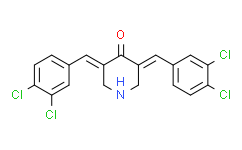
购物车0
产品总数:61441


| 商品编号 | 规格 | 价格 | 会员价 | 是否有货 | 数量 |
|---|---|---|---|---|---|
| PL10720-10mg | 10mg | ¥1365.00 | 请登录 |
|
|
| PL10720-50mg | 50mg | ¥4095.00 | 请登录 |
|
|
| PL10720-100mg | 100mg | ¥6825.00 | 请登录 |
|
|
| PL10720-200mg | 200mg | 询价 | 询价 |
|
|
| PL10720-500mg | 500mg | 询价 | 询价 |
|
|
| PL10720-10mM*1mLinDMSO | 10mM*1mLinDMSO | ¥1591.00 | 请登录 |
|
 扫码关注公众号
扫码关注公众号